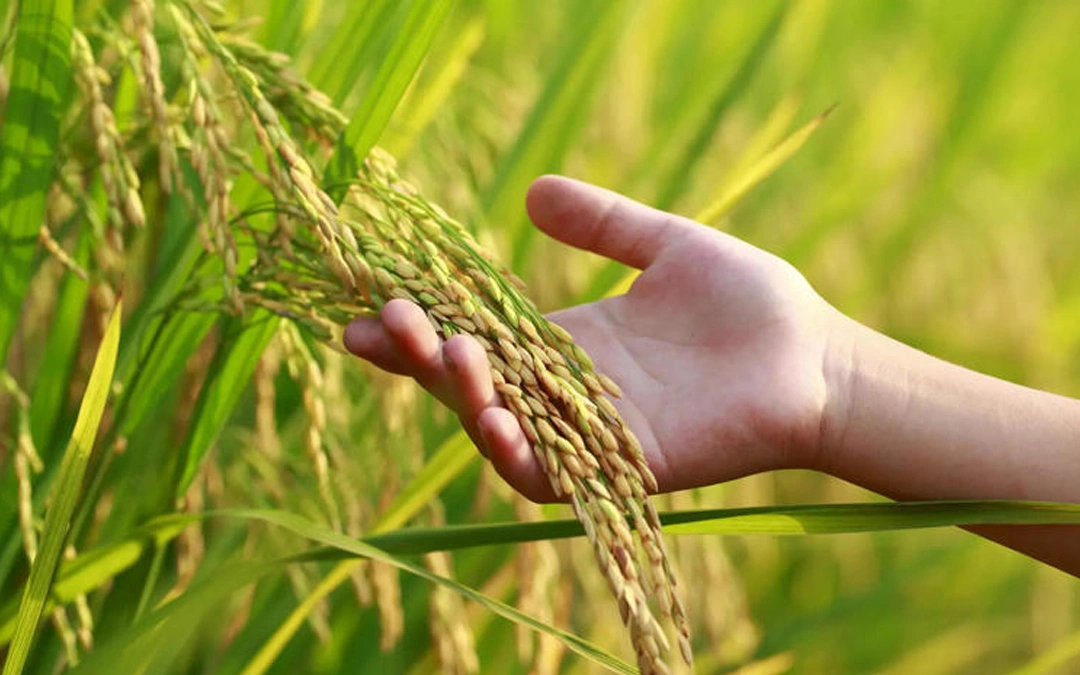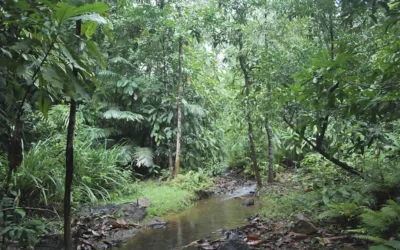With drought-tolerant, climate-resilient rice just two years away from Indian farms, gene editing could change how the country grows its staple. But questions around safety, regulation, and adoption still remain.
Two rice varieties — ‘DRR Dhan 100 (Kamala)’ and ‘Pusa DST Rice 1’, developed by ICAR and its associated institutions — are the world’s first genome-edited rice strains and are being positioned as potential game changers in sustainable agriculture.
Scientists believe that cultivating these two varieties over 5 million hectares could yield an additional 4.5 million tonnes of rice while conserving 7,500 million cubic meters of irrigation water. Additionally, these climate-resilient variants are expected to reduce methane emissions by around 20%, along with offering a yield increase of 20% to 30%.
This breakthrough could help address one of the major challenges in rice cultivation in India — its resource-intensive nature. With rice being a dietary staple for nearly 800 million Indians and each kilogram of traditional rice requiring an average of 2,500 litres of water to grow, rice farming consumes more than half of the irrigation water used in Indian agriculture.
What Is Genome Editing?
Genome editing refers to the scientific technique of making precise changes to an organism’s native genes, allowing for the development of new and beneficial traits without introducing foreign DNA. This includes adding, removing, or modifying DNA at specific genome locations. The method has wide applications across medicine, agriculture, and basic research.
Why Do We Need Genome-Edited Rice?
Given rice’s status as a high water-consuming crop, ICAR’s National Rice Research Institute (NRRI) conducted scientific studies quantifying the water required to produce 1 kg of rice. They concluded that one of the earliest and most significant impacts of climate change would be water scarcity, especially affecting rice cultivation.
“In the next two decades, there will be a need to grow about 25% more rice with 10%-15% less water,” noted ICAR-NRRI in a research report on water management for rice production.
Genome editing provides a means to create drought-tolerant rice that requires significantly less water.
Better Yield, Climate-Resilient Strains
ICAR initiated a genome-editing programme for rice in 2018 and selected two widely grown mega varieties — ‘Samba Mahsuri (BPT5204)’ and ‘MTU010 (Cottondora Sannalu)’ — for improvement through gene-editing interventions.
Using gene-editing techniques, scientists enhanced the stress tolerance, yield, and climate adaptability of these popular varieties while retaining their core strengths, resulting in the development of two new genome-edited rice strains.
PUSA DST RICE 1
Developed by ICAR-Indian Agricultural Research Institute (ICAR-IARI), New Delhi
• Features: Enhanced tolerance to salinity and drought
• Suitability: Especially beneficial for regions with saline and alkaline soils
• Performance: Shows significant yield improvement under stress
• Yield gains: Around 10% in inland salinity zones, 15% in alkaline soils, and 30% in coastal salinity conditions
DRR DHAN 100 (KAMALA)
Developed by: ICAR-Indian Institute of Rice Research (ICAR-IIRR), Hyderabad
• Maturity: Ready for harvest in 130 days — 20 days earlier than its parent strain
• Water use: Early maturity helps save water
• Yield: 19% increase over Samba Mahsuri, with an average of 5.4 tonnes/hectare
• Potential: Up to 9 tonnes/hectare under ideal conditions
• Best for: Regions with low water availability
Can It Harm Humans?
The Coalition for a GM-Free India — a network of individuals and organisations opposing genetically modified organisms — has urged the government to halt the release of these genome-edited rice varieties and bring them under strict regulatory oversight. They claim these varieties could be harmful to human health, damage the environment, and undermine seed sovereignty.
‘No Health Or Environmental Concerns’
Since these genome-edited rice lines do not contain any foreign DNA, they are comparable to conventionally bred varieties. Two main techniques — Site Directed Nuclease 1 (SDN1) and Site Directed Nuclease 2 (SDN2) — were used in their development. These methods cause genetic changes that are indistinguishable from those that occur naturally or through conventional breeding.
Because of this, SDN1 and SDN2 genome edits are exempt from India’s stringent bio-safety rules under the Environment (Protection) Act, 1986.
The Institutional Bio-safety Committee (IBC) of ICAR cleared the lines, and the Review Committee on Genetic Manipulation (RCGM) granted regulatory clearance on May 31, 2023, under the relaxed norms for SDN1 and SDN2 categories.
Viswanathan Chinnusamy, the lead developer of the genome-edited rice and joint director (research) at IARI, explained that genome-edited seeds do not contain foreign DNA, unlike GM crops. He added that concerns about health are unfounded, as these varieties are developed using a mutation-based approach rather than transgenic technology.
“Hence, it has no health or environmental concerns,” he said.
Discover more empowering stories and insightful content like this on YOUxTalks, your go-to destination for inspiration and knowledge.
Follow YOUxTalks on Instagram: https://www.instagram.com/youxtalks











